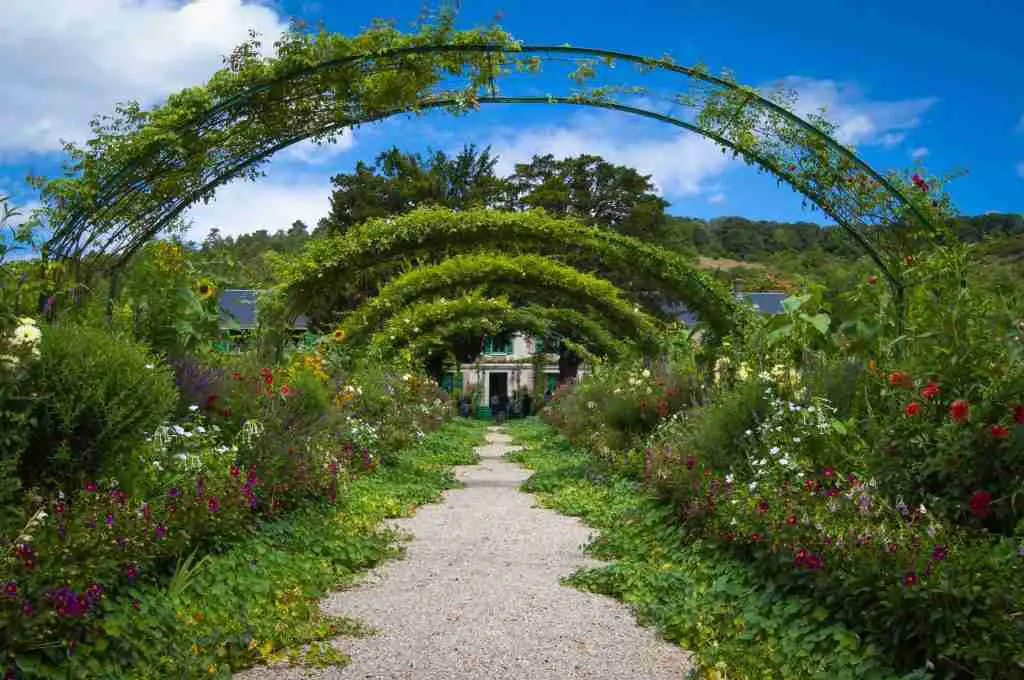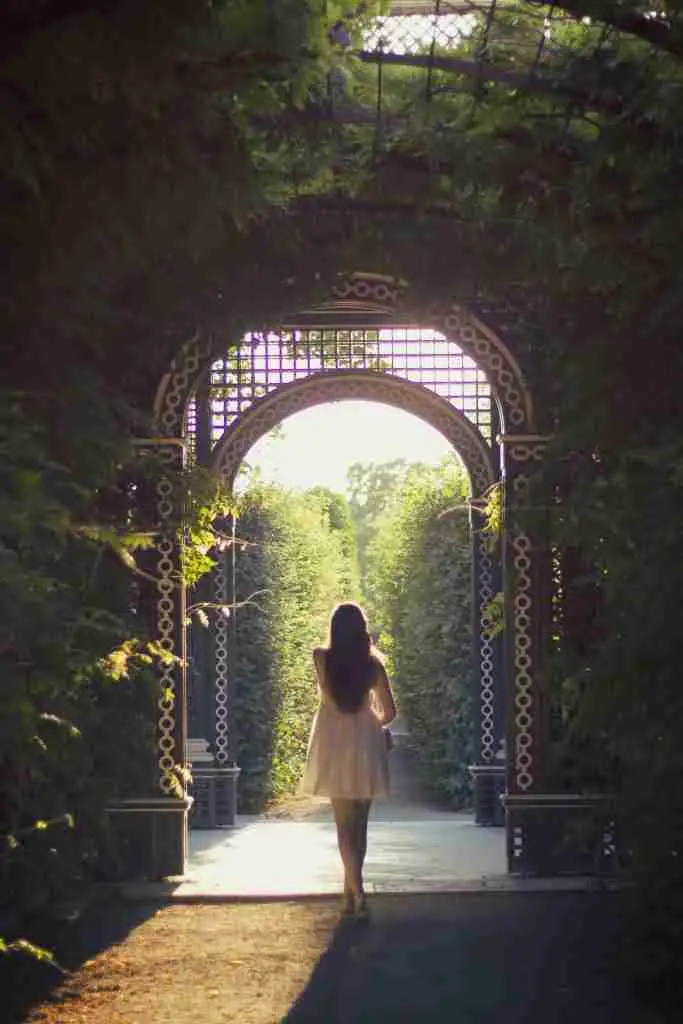Immerse yourself in the serene beauty of a private Japanese garden oasis nestled in Palm Springs. This article takes you on a tour of Thomas Ford and Michael Hart’s breathtaking garden, expertly designed to echo the grace and aesthetics of traditional Japanese gardens. With 360-degree views of the majestic San Jacinto and Santa Rosa ranges, the garden seamlessly blends the natural landscape with carefully curated desert plants. As you explore the garden, you’ll discover captivating vignettes that change with each step, making your journey a truly enchanting experience. The article also delves into the architectural elements of the home, highlighting its connection to the surrounding environment. Get ready to be inspired by the harmonious fusion of East and West in this extraordinary Japanese garden oasis in Palm Springs.
Cultural Fusion in Palm Springs: East Meets West
Thomas Ford and Michael Hart’s Japanese-style Garden
Nestled in Andreas Hills, Palm Springs, the Japanese-style garden of Thomas Ford and Michael Hart is a stunning example of cultural fusion. Inspired by their love for Japanese culture and aesthetics, Ford and Hart have created a private oasis that seamlessly blends East and West. The garden serves as a testament to their deep appreciation for Japanese landscape design and their desire to create a tranquil haven in the heart of the desert.
The Beauty of Borrowed Scenery
One of the key concepts in Japanese garden design is “borrowed scenery,” or shakkei. This concept is beautifully exemplified in Ford and Hart’s garden, as they are fortunate to have 360-degree views of the surrounding mountains. Just as the renowned Tenryū-ji garden in Kyoto incorporates views of the mountains to create a sense of depth and harmony, the Ford-Hart residence elegantly incorporates the magnificence of the San Jacinto and Santa Rosa ranges into its landscape. The mountain views not only add to the overall beauty of the garden but also enhance the sense of serenity and tranquility.

The Zen Scenery of Andreas Hills
Located in the picturesque Andreas Hills neighborhood, the Ford-Hart residence is a true oasis of Zen. Architect Lance O’Donnell worked closely with Ford and Hart to ensure that the garden seamlessly integrates with the architecture of the house. The residence, originally designed by John Walling, incorporates elements of Frank Lloyd Wright’s Prairie style, characterized by horizontal lines and a strong connection to the natural environment. O’Donnell maintained the original footprint of the house while adding glass portals and open-air thresholds to create a seamless indoor-outdoor experience. This integration allows the residents to enjoy the beauty of the garden from every corner of the house.
Architectural Integration: The House and The Garden
Lance O’Donnell played a crucial role in the design of the garden, ensuring that it harmonizes with the architecture of the house. By maintaining the original footprint of the residence, O’Donnell was able to create a seamless transition between the indoor and outdoor spaces. The house serves as a backdrop for the creativity and beauty happening in the garden, with strategically placed windows and glass portals that offer stunning views of the landscape. This careful architectural integration allows residents to experience the unfolding beauty of the garden from every room in the house.

Frank Lloyd Wright’s Influence on the Home Design
Frank Lloyd Wright’s influence is evident in the design of the Ford-Hart residence. The architect, known for his Prairie style, emphasized horizontal lines and a strong connection between the house and its natural surroundings. The flat cantilevered roofs and ample use of glass in the residence reflect Wright’s signature style. By incorporating these elements into the home design, O’Donnell pays homage to Wright’s philosophy and creates a seamless connection between the house and the Japanese-style garden.
Maintaining the Original Footprint
In the renovation of the Ford-Hart residence, Lance O’Donnell made the deliberate decision to maintain the original footprint of the house. This allowed for a more efficient use of space and ensured that the garden seamlessly integrated with the architecture. By preserving the existing structure, O’Donnell was able to focus on creating a harmonious indoor-outdoor experience and enhancing the connection between the house and the garden.

The Indoor-Outdoor Experience
One of the defining features of the Ford-Hart residence is the seamless indoor-outdoor experience it offers. Through the strategic use of glass portals and open-air thresholds, the residents can enjoy the beauty of the garden from the comfort of their home. The architecture serves as a visual frame for the garden, allowing stunning vignettes to unfold and retreat as one moves through the house. Whether it’s the view of a blooming palo verde tree or the sight of the mountains through the kitchen window, the indoor-outdoor experience constantly reveals new and captivating scenes.
The Unfolding Surprises of a Japanese-Style Garden
The Street Entrance and the Front Courtyard
Upon entering the Ford-Hart residence, one immediately encounters the anticipation and beauty of the garden. The street entrance is designed to build excitement, with layered walls, a short flight of steps, and a quick zigzag at the gate. This deliberate sequence leads to a semi-formal garden in the front courtyard, adorned with golden-pronged barrel cactus and blue-green agave. The front courtyard, based on the principles of feng shui, features a 50-foot-long rippling reflection pool. This pool, inspired by the twin straits at Sunnylands in Rancho Mirage, symbolizes abundance and serves as a focal point of the garden.
Reflection Pool and the Flow of Abundance
The reflection pool in the Ford-Hart garden is a sight to behold. Stretching 50 feet long, it creates a ripple effect that adds dimension and movement to the landscape. The pool not only enhances the visual appeal of the garden but also symbolizes the flow of abundance into the household. Presided over by a site-specific sculpture by Stan Bitters, the reflection pool perfectly captures the essence of Japanese garden design and creates a sense of tranquility and serenity.
The Changing Beauty of Garden Vignettes
One of the most enchanting aspects of the Ford-Hart garden is the ever-changing beauty of its vignettes. Just as the magical mossy landscape of Saihō-ji, a temple in Kyoto, is constantly unfolding and changing, so too is the garden at the Ford-Hart residence. With every step through the garden, new scenes manifest and retreat – a blooming palo verde tree here, a stone pagoda surrounded by olive trees there. The joy of the garden comes from moving through and around the house, discovering these fleeting moments of beauty and serenity.
The Unmistakable Influence of Flora and Fauna
Exotic Desert Plants and Their Role in the Garden
The Ford-Hart garden features a carefully curated selection of desert plants, each playing a unique role in creating the Japanese aesthetic. Exotic desert plants such as barrel cactus, agave, and olive trees transport visitors to the arid landscapes of Japan. These plants not only add visual interest to the garden but also serve a functional purpose in water conservation. With their ability to thrive in harsh desert conditions, these plants highlight the resilience and beauty of nature.
How the Flora Evokes Japanese Scenery
At the Ford-Hart residence, the flora plays a crucial role in evoking the beauty of Japanese scenery. The delicate petals of the palo verde tree’s tiny yellow flowers resemble Japanese cherry blossoms, or sakura. This visual similarity serves as a subtle reminder of the connection between the Eastern and Western cultures at play in the garden. Additionally, the foliage of the desert plants, with its unique texture and color palette, adds depth and dimension to the landscape, mirroring the lush greenery often found in traditional Japanese gardens.
The Ephemeral Fragrance of Orange-Scented Blossoms
One of the sensory delights of the Ford-Hart garden is the ephemeral fragrance of orange-scented blossoms. The pittosporum shrubs, carefully chosen and placed by Hart, release their sweet aroma for only two weeks during the transition to summer. This fleeting fragrance adds an element of surprise and delight to the garden, transporting visitors to a sensory oasis. Hart’s decision to leave the fallen palo verde posies unraked is a testament to his appreciation for the ephemeral beauty of nature and its ability to stir nostalgia.
The Majestic Appeal of Stonework in the Garden
The 200-Years-Old Stone Pagoda
A true centerpiece of the Ford-Hart garden is the 200-years-old stone pagoda. Rising gracefully among agave, creeping rosemary, and olive trees on the backyard’s north-facing slope, the pagoda exudes a sense of timelessness and majesty. Its weathered stone surface adds texture and character to the landscape, reminding visitors of the rich history and cultural heritage of Japanese gardens. The stone pagoda serves as a visual anchor, drawing the eye and inviting contemplation.
Stone Landscape’s Influence on the Garden Vistas
The use of stone in the Ford-Hart garden is not limited to the pagoda alone. Stone landscapes, carefully arranged and positioned, play a fundamental role in shaping the visual appeal of the garden vistas. From meandering stone pathways to elegantly placed boulders, the stonework adds structure and interest to the landscape. Furthermore, the natural textures and colors of the stones echo the craggy mountains that surround the property, creating a harmonious and cohesive aesthetic.
Sculpture by Stan Bitters in the Reflection Pool
A notable addition to the Ford-Hart garden is the site-specific sculpture by renowned artist Stan Bitters. This custom concrete monolith takes center stage in the 50-foot-long reflection pool, adding a touch of artistic flair to the landscape. Bitters’ sculpture not only complements the surrounding natural elements but also serves as a focal point, drawing the eye and inviting contemplation. The combination of the sculpture, the reflection pool, and the lush greenery creates a truly mesmerizing scene.
A Walk Through the Verdant North Slope
The Symbolic Depiction of Prosperity and Happiness
The north slope of the Ford-Hart garden is a sight to behold. This verdant paradise, with its frilly leaf canopies and fully outstretched branches of mature fan palms and olive trees, serves as a symbolic depiction of prosperity and happiness. The lush foliage and abundance of greenery create a sense of tranquility and serenity, inviting visitors to explore and unwind in this peaceful oasis. The careful selection and placement of trees in this part of the garden evoke the image of long-limbed cranes hitching a ride on the shell of a tortoise, headed towards a fabled paradise.
The Water Conservation Efforts
Water conservation is a vital consideration in desert landscapes, and the Ford-Hart garden is no exception. The natural shading provided by the north slope contributes to water conservation efforts by reducing evaporation and providing a cooler microclimate for the plants. This, in turn, allows for the cultivation of a wider variety of flora while minimizing water usage. By carefully designing the garden to work in harmony with the climate and natural surroundings, Ford and Hart have created a sustainable and ecologically responsible oasis.
The Importance of Shading for Plant Growth
Shading plays a vital role in plant growth, especially in desert landscapes where extreme temperatures are common. The natural shading provided by the north slope in the Ford-Hart garden creates a favorable microclimate for the plants, allowing them to thrive and flourish. The shade provided by mature fan palms and olive trees not only reduces water evaporation but also protects the delicate desert plants from the intense desert sun. This strategic use of shading ensures the long-term health and vibrancy of the garden.
Decoding the Japanese Cultural Motifs
The Role of the Twin Straits in Japanese Culture
Japanese culture is rich in symbolism, and the Ford-Hart garden pays tribute to this heritage. Inspired by the twin straits at Sunnylands in Rancho Mirage, the 50-foot-long reflection pool in the front courtyard not only symbolizes abundance but also references a significant cultural motif. In Japanese culture, twin straits represent a passage to another world or a fabled paradise. By incorporating this motif into their garden, Ford and Hart create a sense of intrigue and invite visitors to embark on their own journey of discovery.
Understanding the Feng Shui Principles in Landscape Design
Feng shui, an ancient Chinese practice, has deep roots in Japanese culture and aesthetics. The Ford-Hart garden incorporates feng shui principles in its layout and design, ensuring harmony and balance in the landscape. The deliberate arrangement of plants, stones, and water elements follows the yin and yang philosophy, creating a sense of equilibrium and tranquility. By embracing these principles, Ford and Hart not only create a visually stunning garden but also promote harmony and positive energy in their outdoor space.
The Symbolism of Tall Palms in the Backyard
The presence of tall palms in the backyard of the Ford-Hart residence holds a significant symbolism in Japanese culture. These majestic trees, reaching towards the sky with their graceful fronds, represent long-limbed cranes in flight. In Japanese mythology, cranes are considered to be sacred creatures associated with longevity and good fortune. By incorporating tall palms in their garden, Ford and Hart pay homage to this symbolism and infuse their outdoor space with a sense of auspiciousness and positive energy.
An Indoor Experience of the Garden
The Indoor View Points
From the inside of the Ford-Hart residence, one can experience the beauty of the garden from various vantage points. Glass portals and open-air thresholds strategically placed throughout the house frame stunning garden views, creating a seamless connection between the indoor and outdoor spaces. Whether it’s a blooming palo verde tree seen through the kitchen’s clerestory windows or the sight of a stone pagoda flanked by olive trees, the indoor view points offer ever-changing scenes of natural beauty.
Reveling in the Unfolding Garden Scenes
As one moves through the Ford-Hart residence, the garden constantly unfolds and reveals new scenes of beauty. The interplay between interior and exterior spaces allows for a dynamic and ever-evolving experience. Each room offers a unique perspective, with garden vignettes manifesting and retreating as one explores the house. This constant interplay between the indoors and outdoors creates a sense of wonder and delight, transforming the house into a truly immersive garden experience.
Integrating Natural Light in Each Room
Natural light plays a crucial role in the Ford-Hart residence, illuminating the indoor spaces and creating a harmonious connection with the garden. The strategic placement of windows and glass portals allows ample natural light to flood into each room, illuminating the space and creating a sense of openness. This integration of natural light not only enhances the visual appeal of the interior but also brings the beauty of the garden indoors, blurring the boundaries between the two.
The Retreat: Tea Pavilion and the Hot Tub
Sipping Sencha in the Modern Tea Pavilion
One of the highlights of the Ford-Hart garden is the modern tea pavilion, a serene retreat where one can enjoy a cup of sencha, a traditional Japanese green tea. The built-in sunroof of the pavilion allows dappled light to filter through, creating a tranquil and meditative atmosphere. Surrounded by the sights and sounds of nature, the tea pavilion provides a peaceful escape from the hustle and bustle of everyday life, inviting residents and guests to relax and rejuvenate in its serene embrace.
The Hot Tub and the Waterfall Soundscape
Continuing the theme of relaxation and tranquility, the hot tub in the Ford-Hart garden offers a soothing experience for both the body and the mind. The hot tub’s design allows it to overflow into the pool, creating a gentle waterfall soundscape that further enhances the sense of serenity. The sound of cascading water, combined with the lush greenery and the backdrop of the mountains, creates a multisensory experience that lulls visitors into a state of peace and tranquility.
Serving as a Sanctum of Peace and Tranquility
The tea pavilion and the hot tub function as sanctuaries of peace and tranquility in the Ford-Hart garden. Whether sipping sencha in the pavilion or soaking in the hot tub, these spaces offer respite from the outside world and provide an opportunity for reflection and relaxation. Surrounded by the beauty of nature, residents and guests can find solace and inner calm in these intimate retreats, experiencing firsthand the restorative power of the Japanese garden oasis.
Conclusion: Creating Your Own Garden Oasis
The Ford-Hart residence serves as an inspiring example of how to create a garden oasis that reflects your personal style and embraces the beauty of East meets West. Drawing inspiration from their love for Japanese culture and aesthetics, Thomas Ford and Michael Hart have successfully transformed their Palm Springs home into a haven of tranquility and beauty. By adapting Japanese garden principles and motifs to their own garden, they have created a space that is not only visually stunning but also deeply meaningful. The pleasure of having a personal garden oasis lies in the ability to create a space that brings joy and serenity, a true haven from the demands of everyday life. By infusing your garden with elements that resonate with your own personal style and taste, you can create a sanctuary that reflects your unique personality and offers an escape from the outside world. Whether it’s embracing the elegance of Japanese aesthetics or incorporating elements from other cultures, the key is to create a space that is a true reflection of yourself and brings you joy every time you step into it. With a little creativity and a lot of love, you too can create your own garden oasis that provides a respite from the pressures of daily life and brings you closer to the beauty of nature.




